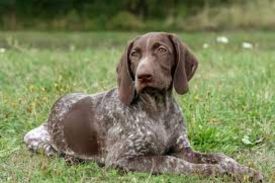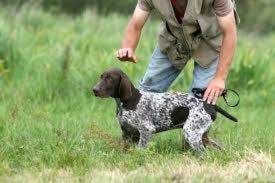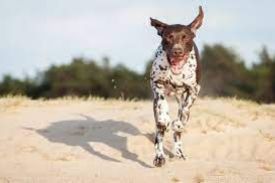Are you considering bringing a German Shorthaired Pointer into your home but worried about how they will react to your beloved feline friend? While it’s true that some dogs have a high prey drive and may see cats as potential targets, the answer to whether or not a German Shorthaired Pointer will kill a cat is not so clear cut. It ultimately depends on the individual dog’s temperament and upbringing.
This article dives deep into German Shorthaired Pointers’ relationship with cats. We’ll explore their temperament, socialization, training needs, signs of aggression to look out for, and how to create a safe environment for furry friends.
By the end of this article, you’ll better understand what it takes to coexist peacefully between these two very different animals.
Key Takeaways
- German Shorthaired Pointers may have a high prey drive towards smaller animals like cats.
- Proper training, socialization, and supervision can help a German Shorthaired Pointer coexist peacefully with cats or other pets in the household.
- Signs of aggression to look out for include raised hackles, growling or snarling, and a stiff body posture.
- Providing separate spaces for each pet can help reduce tension and prevent potential conflicts.
Understanding the Breed’s Temperament

If you’re considering getting a German Shorthaired Pointer, it’s essential to know that their temperament is generally friendly and enthusiastic towards people and animals alike. These dogs are known for being loyal, affectionate, and energetic. They love to play and have fun with their owners, but they also have a strong hunting instinct that can make them aggressive toward smaller animals like cats.
One of the common misconceptions about German Shorthaired Pointers is that they are natural-born killers who will attack anything that moves. While it’s true that these dogs were initially bred to hunt game birds, they were also trained to retrieve prey without damaging it. This means that while they may be instinctively drawn to chase after small animals like cats, they are not necessarily predisposed to kill them.
It’s important to remember that every dog has its own personality and behavior patterns. Some German Shorthaired Pointers may get along with cats, while others may see them as prey.
If you plan on introducing your GSP to a cat or other small animal, it’s best to do so slowly and under close supervision until you can trust your dog not to harm them. With proper training, socialization, and management, there’s no reason why a German Shorthaired Pointer can’t coexist peacefully with cats or other pets in the household.
Socialization and Training

To ensure your German Shorthaired Pointer gets along with cats, it’s crucial to socialize and train them properly. Socialization techniques involve exposing your dog to different types of animals and environments at a young age. This helps develop their social skills and reduces the likelihood of aggressive behavior toward cats. Positive reinforcement training is also an effective method of training dogs not to harm other pets.
Here are three socialization techniques you can use to help your dog get along with cats:
- Familiarize them with the scent of cats: Introduce your dog to the smell of a cat by letting them sniff a blanket or toy that belongs to a cat. This will help them become more comfortable around felines.
- Controlled interactions: Start with controlled interactions between your dog and cat while monitoring both pets closely. Gradually increase their time together as they become more comfortable around each other.
- Reward good behavior: Use positive reinforcement training by rewarding your dog for good behavior around cats, such as sitting calmly or ignoring them.
By following these socialization techniques and implementing positive reinforcement training, you can teach your German Shorthaired Pointer how to coexist peacefully with cats in the household. Remember, patience and consistency are key when introducing new behavior to a pet!
Signs of Aggression

As a pet owner, it’s essential to be able to read your dog’s body language and vocal cues to determine if they’re displaying signs of aggression.
This can include raised hackles, growling or snarling, and a stiff body posture.
It’s also important to watch for warning signs of an impending attack, such as direct eye contact and a lowered head.
By being aware of these signals, you can prevent incidents and keep your pet and others safe.
Body Language and Vocal Cues
Though dogs can’t speak, they use body language and vocal cues to communicate their intentions toward other animals. If you have a German Shorthaired Pointer (GSP) and are worried about how it might interact with your cat, you must learn to read its behavior.
Here are some signals that your GSP may give off:
- Stiff tail: This is a sign of alertness or aggression.
- Growling: This is an obvious sign of attack.
- Direct eye contact could indicate dominance or an attempt to assert control.
- Raised hackles: This means the hair on the back of the dog’s neck stands up, showing fear or aggression.
- Baring teeth: This is a warning sign that your GSP feels threatened.
It’s important to remember that interpreting signals depends on the context and the individual dog’s personality. However, if you notice these signs in your GSP when it’s around your cat, it might be best to separate them for everyone’s safety.
As always, consult with a professional trainer if you’re concerned about your pet’s behavior around other animals.
Warning Signs of an Impending Attack
If you’re a pet owner and considering introducing a new cat to your German Shorthaired Pointer, it’s essential to recognize fear-based behavior from your dog. This is especially crucial if your GSP has never been around cats before.
Some warning signs include growling, barking, or snarling at the sight of the cat. They may also tense up, exhibit stiff body language, or stare intently at the feline.
It’s essential to take action when these behaviors are exhibited because they often indicate an impending attack on the cat. Prevention is critical in situations like this! Please don’t wait until it’s too late to separate your pets.
Try introducing them slowly and under supervision so that both animals can adjust to each other’s presence without any adverse outcomes. By recognizing fear-based behavior and taking action early on, you can ensure a safe and happy home for your furry friends!
Creating a Safe Environment
Remember a few key points when creating a safe environment for your pets.
Firstly, separating your pets when necessary is essential, especially if one shows aggression towards the other.
Secondly, providing separate spaces for each pet can help reduce tension and prevent potential conflicts.
Lastly, monitoring their interactions closely can help you identify issues early on and take action before things escalate.
Separating Pets When Necessary
To keep your cat safe, consider separating your German Shorthaired Pointer and cat when necessary. While they can coexist peacefully, there are times when it’s best to keep them apart. Here are some situations where separation is wise:
- During meal times: Dogs may become possessive of their food and aggressive towards other animals approaching them while eating.
- When the cat is in the heat: Female cats can be agitated and lash out at any animal nearby.
- Monitoring interactions closely is essential when introducing new animals until everyone gets along well.
- After an injury or surgery: Dogs can be playful and rambunctious, which could lead to accidental injuries if they get too rough with a recovering feline.
- If there has been previous aggression: It’s best to err on caution and separate them.
While separation might seem inconvenient, it’s far better than dealing with an injured or traumatized pet. By ensuring both pets have their own space, you’ll provide a safe and happy environment for all household members.
Providing Separate Spaces
Creating separate spaces for your pets can be like giving them their kingdoms, complete with all the amenities they need to feel comfortable and content.
Providing separate spaces is crucial to ensure their safety regarding a German Shorthaired Pointer and a cat.
Indoor arrangements allow both pets to have space within the same household. Supervising interactions between a GSP and a cat is significant, especially during the initial stages of their relationship.
Outdoor arrangements are also an option but require more supervision than indoor ones. You’ll need to ensure that your GSP is never left alone with the cat in unsupervised situations outside. Additionally, if you plan on letting both pets play together in outdoor environments, ensure that there are no escape routes or areas where one pet can quickly corner the other.
You can enjoy both pets’ company without worrying about harm by creating separate spaces and arranging supervised interactions between your German Shorthaired Pointer and your cat.
Monitoring Interactions
Ensure you closely monitor how your GSP and cat interact to ensure their safety. Supervising interactions is crucial to prevent potential harm to either pet. Here are some preemptive measures you can take:
- Start slow: When introducing your pets, make sure it’s in a controlled environment where both animals feel safe.
- Reward positive behavior: Whenever your GSP shows good behavior around your cat, reward them with treats or praise.
- Separate them when necessary: If you have doubts about their interactions or they seem agitated, separate them immediately.
It’s important to remember that even if your GSP has never shown aggression towards cats before, it’s still possible for them to cause harm unintentionally. By closely monitoring their interactions and taking preemptive measures, you can help ensure a safe and happy home for your furry friends.
Frequently Asked Questions
What other animals are German Shorthaired Pointers known to get along with?
Are you looking to introduce your GSP to other animals? With proper socialization, they can get along with rabbits and birds. Regarding living with other dogs, GSPs are generally compatible once dominance issues are managed.
How much exercise does a German Shorthaired Pointer need daily?
They need plenty of outdoor activities and exercise routines to keep your German Shorthaired Pointer healthy and happy. Aim for at least an hour of vigorous daily exercise, such as running or playing fetch. It’s also vital to provide them with mental stimulation, like training sessions or puzzle toys.
Can a German Shorthaired Pointer be trained not to chase cats?
Did you know German Shorthaired Pointers can learn to coexist peacefully with cats with proper training techniques? However, behavioral challenges may arise, and consistent training is necessary. Serving both pets’ needs requires patience and dedication.
What are some common health issues that German Shorthaired Pointers may face?
Understanding German Shorthaired Pointer health is crucial for their well-being. Common treatments include hip dysplasia and ear infections, while allergies can also be a concern. Preventative care and proper nutrition are vital to maintaining their health.
Are German Shorthaired Pointers good with children?
You’re wondering if German Shorthaired Pointers are good with children. The answer is yes, but only with proper training and socialization. Positive experiences can lead to a great bond, but safety concerns must be taken seriously.
Conclusion
In conclusion, this blog has helped answer whether a German Shorthaired Pointer will harm a cat. At Bone Voyage Dog Rescue, responsible pet ownership is vital. While some German Shorthaired Pointers may have a prey drive, proper training and socialization can significantly mitigate potential risks.
However, some may argue that accidents can happen and that the risk of harm to their cat is too high. But before making any hasty decisions, consider the love and joy your GSP brings to your life. They’re loyal companions who thrive on human interaction and make excellent family pets.
If you’re ready to open your heart and home to a loving canine companion, we invite you to consider adopting a Bone Voyage Dog Rescued. Our organization is dedicated to finding forever homes for these beautiful animals, ensuring they receive the care and love they deserve.
Visit our website, bonevoyagedogrescue.com, and embark on a life-changing journey by adopting a loyal and loving furry friend. Let’s make a difference in their lives and experience the joy of adoption.
